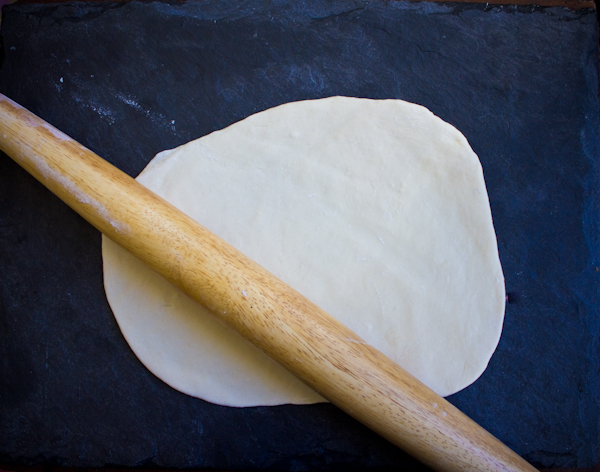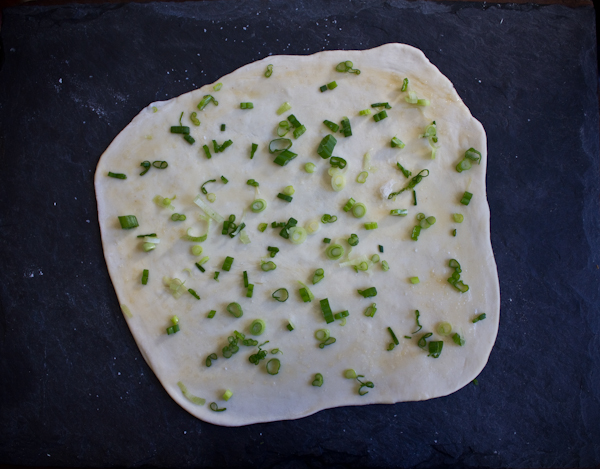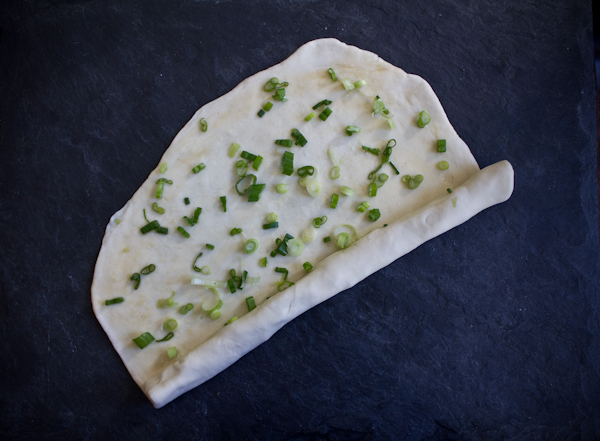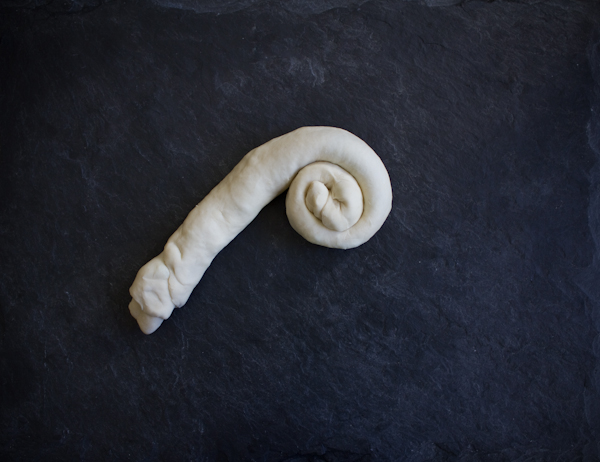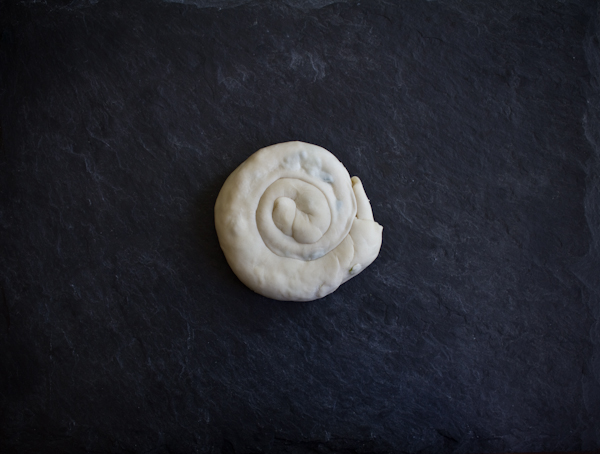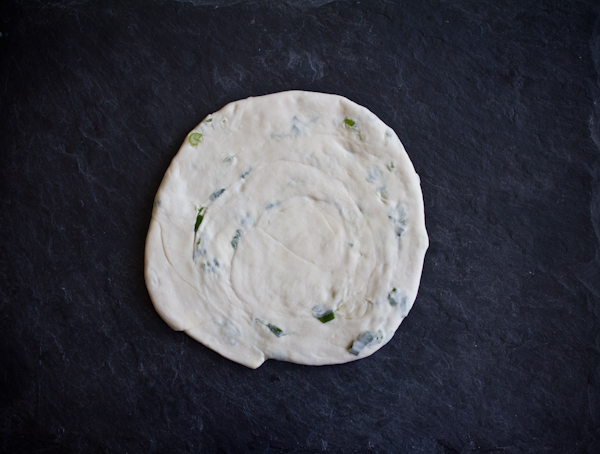 Move over scallions. I may have to cheat on you. My love affair with dim sum scallion pancakes is no secret. There are few times I can think of when they don't appeal to me. (or make me start to go all Pavlovian as I even type the words.) Though green and doing very well, the scallions planted in my garden are still about the size of glorified dental floss and won't be serving up any exotic savories for a few weeks. However, we do have garlic scapes! And herbs! Lots of both! Scallions? Who needs scallions? While not exactly a necessity, (more of an insatiable craving), mother invention shone down and offered up this bright, summery, mildly garlicky, herby, southeast Asian-inspired perfection on a greasy paper towel. There is a tremendous (and tremendously cheap) hole-in-the-wall dumpling shop in NYC's Chinatown, to which I make frequent pilgrimages. Alongside their dumplings, they have a monstrous cast iron pan in which they make a very similar sesame pancake. You can get a pizza-slice-sized wedge "stuffed with veggies" for $1.25, which is split laterally and crammed with shredded carrot and chopped cilantro leaves and stems. There was definitely some inspiration from there in this as well. Give these a try, using all that summer is offering up right now. Shredded zucchini, carrot or beet, torn squash blossoms, thyme, sage, thinly sliced chard could all be welcome additions. Fried dough + farm fresh herbs and produce = What could possibly be bad? (more…) | ||||||||||||||||
Scallion pancakes. Oh how I love thee.
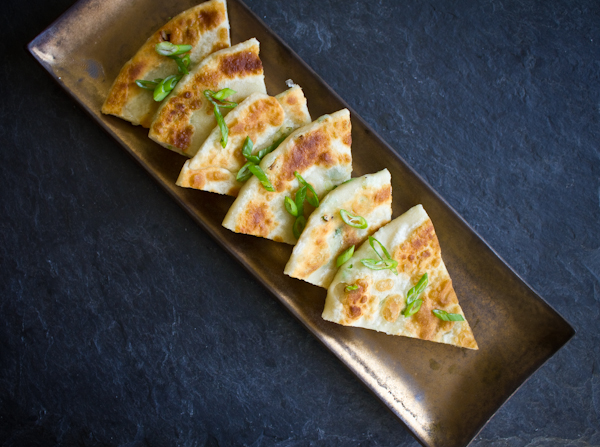 These remarkable, little chewy, salty, scallion-y, layered disks of oily crunchy heaven completely stole my heart when I first had them my first year living in the city a decade and a half ago. Often I would grab a late night snack of scallion pancakes and dumplings on my way home from rehearsal near midnight, back when my metabolism could handle such an indulgence. On our honeymoon in China three years ago, I stumbled upon a mirage-like goddess making scallion pancakes on a narrow back street in Beijing. 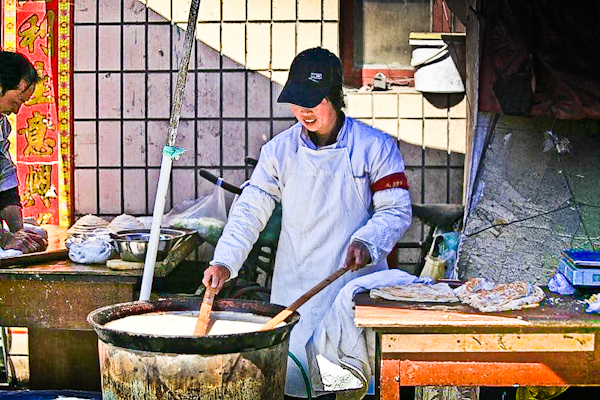 Just look at the size of that pan! We got a New York pizza slice-sized wedge (see the table on the right), wrapped loosely in wax paper, that the newlyweds pawed at, stopped dead on the street, like malnourished tiger cubs. Who got the last bite should have gone in a prenup. Too recently I discovered that these treasures are not all that difficult to make yourself--however dangerous it could be to embark upon in the privacy of your own home. Proceed with caution. The management is not responsible for the abandonment of any new year's resolutions. But if only in honor of Chinese New Year, give these a try. The rolled out, uncooked, pancakes can be layered in slightly floured wax paper and stored in the refrigerator wrapped in plastic for about twenty-four hours, and then finished in a frying pan for two minutes on each side. Do we hear a great Year of the Rabbit themed Super Bowl appetizer? 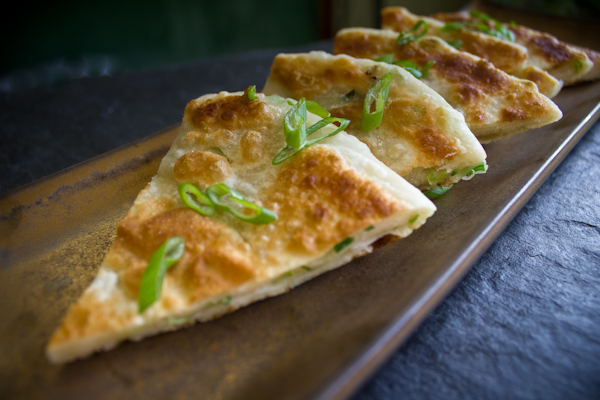 | ||||||||||||||||
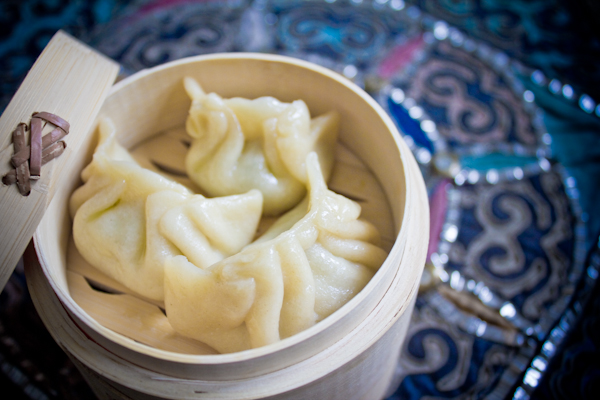 Chinese new year begins tonight at midnight. An integral part of the celebratory feasts are meat and vegetable stuffed dumplings. Called jiao-zi in northern China, they are typically eaten right at the start of the new year. Their crescent shape is reminiscent of the shape of ancient Chinese currency, silver and gold ingots, and eating them at the birth of the new year is thought to bring wealth and prosperity. When I first moved to New York City in the mid-nineties, I had my first taste of really authentic chinese dumplings. It was love at first slightly-burned-tongue. More of an obsession, to be honest, as I would devour as many as I could afford, as often as I could justify. Three years ago, my husband and I celebrated our honeymoon in China. I had the wonderful good fortune of being able to learn a tremendous amount about the cuisine, with trips to many local markets, tremendous meals, and some cooking lessons at the Cloud 9 cooking school in Yangshuo on the banks of the breathtaking Li River. One of the dishes we cooked in class were dumplings. Here is one of our lovely teachers explaining how to fold the rounds of dough into the crescent shape. http://www.youtube.com/watch?v=aphirz7wcbM So below are my recipes for both pork and vegetable dumplings. I have adapted them through the years from what I learned in that class, what I've learned from a big assortment of great cookbooks, and most definitely from what I've learned from eating this favorite of any food I can think of. On a desert island, these are what are coming with me. I am sure there are Chinese grandmothers who will find unauthentic hues in some part of my recipes. But they are as authentic as I've been able to learn through every best effort, and when I burn my tongue with that first divine chewy bite, send me back to China and Chinatowns I've loved, and make me feel very fortunate.
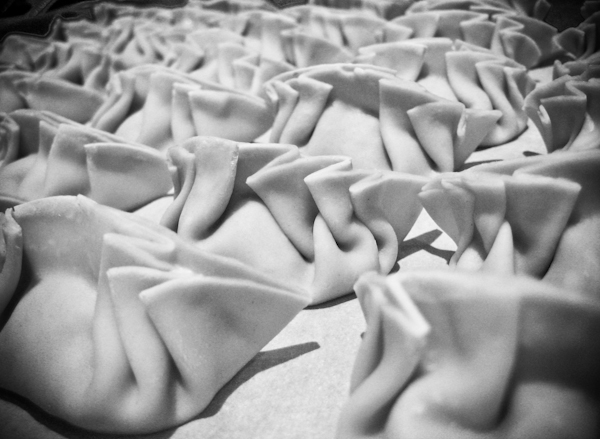 | ||||||||||||||||||||||
|
|
{ welcome! }
 Catie Baumer Schwalb is a chef, food writer and photographer, who splits her life between the city and the country. Not too long ago Catie was a New York City based actress and playwright for more than a decade. She has her Master of Fine Arts from the National Theater Conservatory, and her Grand Diplôme in classic culinary arts from the French Culinary Institute in New York City.
... Read More ≫
Catie Baumer Schwalb is a chef, food writer and photographer, who splits her life between the city and the country. Not too long ago Catie was a New York City based actress and playwright for more than a decade. She has her Master of Fine Arts from the National Theater Conservatory, and her Grand Diplôme in classic culinary arts from the French Culinary Institute in New York City.
... Read More ≫{ get in touch }
{ what's new }
September 12, 2015
August 19, 2013
August 15, 2013
August 13, 2013
August 1, 2013
{ favorites }
{ archives }
Appetizers / Breads & Pastry / Breakfast / Cakes / Canning / Condiments / Dinner / DIY foods / Drinks / Fall / favorites / Grains / Holidays / Local / Noodles & Pasta / Pies & Tarts / Poultry / Salads / Seafood / Snacks / Soup / Spring / Summer / Sweets / Techniques / Vegetables / Vegetarian / Winter /
{ currently reading }
|



